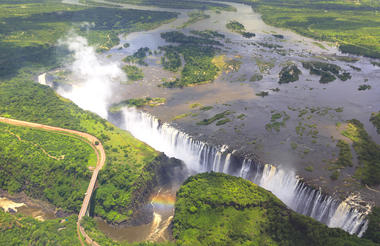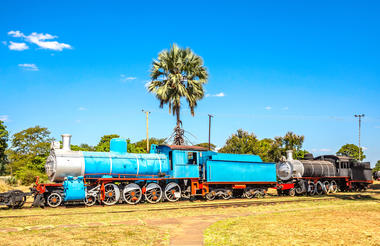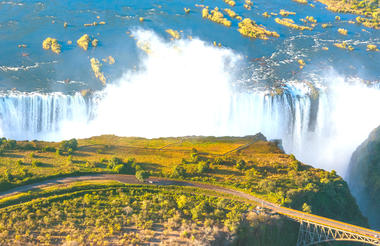Resting at the confluence of the Indian and Atlantic Ocean, sandwiched between the slopes of the iconic Table Mountain and the glistening sapphire waters of Table Bay, the exceptionally scenic city of Cape Town is in a class of its own. Some cities boast rich culture, vibrant nightlife, a cosmopolitan atmosphere and extraordinary architecture, while others boast breathtaking landscapes and extraordinary natural wonders. Cape Town, is lucky enough to be blessed with all of these attractions and so much more. With its bustling harbour, world-class beaches, top-notch vineyards, and its mountainous surroundings brimming with diverse flora and fauna, Cape Town consistently captivates the hearts of all who visit.
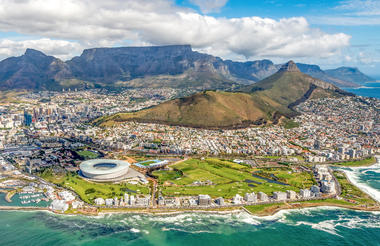
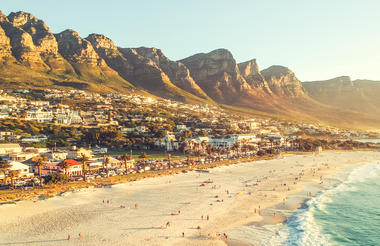
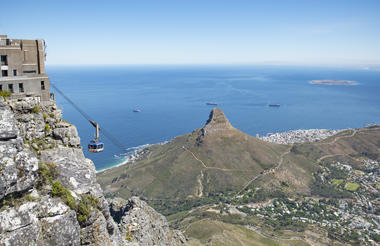
Nestled amongst rugged mountains, Springbok is Namaqualand's commercial and cultural centre. This prosperous town has various sites of interest, including historical monuments, museums, a scenic 4x4 route, several excellent mountain biking trails, and some fascinating geology - making for a wonderful photographic trip. Springbok is also close to the beautiful Namaqualand wildflower reserves, the secluded Richtersveld National Park, and the thundering Augrabies Falls. Another great spot to cool off while enjoying nature here is the pretty Port Nolloth Beach, nearby. The town makes for a wonderful stop on the way to Namibia.



With its well-developed infrastructure, some of the best tourist facilities in Africa and an impressive list of breathtaking natural wonders, touring Namibia is truly a pleasure. Visit the capital of Windhoek and the lovely coastal town of Swakopmund to discover remnants of the country’s German influence, reflected in the architecture, culture, cuisine and the annual Oktoberfest celebrations. To properly appreciate this extraordinary country, you will have to venture out of the cities to explore the remarkable natural landscapes Namibia has to offer. These include: the impressive Fish River Canyon Park; the vast Etosha National Park teeming with local subspecies, such as desert lions, desert elephants and the Hartmann's Mountain Zebra; the hauntingly beautiful Kalahari Desert; and of course the Namib Desert stretching for nearly 1000 km along the magnificent Atlantic coastline. Namibia is an ideal destination for travellers seeking an unforgettable African experience in a uniquely beautiful untamed wilderness.
The Orange River snakes its way through one of Southern Africa’s harshest environments bringing life to an area of sheer rugged beauty. Aside from vineyards in the desert the river also creates a mobile playground from which to explore the area.



This region is typified by the Succulent Karoo. The distinctive climatic characteristics of the Succulent Karoo make it different from all other deserts in the world. Rainfall is reliable and predictable, falling mostly in winter, and prolonged droughts are rare. The Succulent Karoo’s botanical diversity is unparalleled by any other arid region on earth and is the world’s only plant hotspot that is entirely arid. This ecoregion is home to greater than 5,000 higher plant species, nearly 40 percent of which are endemic, and 18 percent of which are threatened. It has the richest succulent flora in the world, harbouring about one-third of the world’s approximately 10,000 succulent species. Other unique features include the diversity of miniature succulents (435 spp.) and geophytes (bulb-like plants 630 spp.). The ecoregion is also a center of diversity and endemism for reptiles and many invertebrate taxa, especially monkey beetles (Rutelinae: Hoplinii). The Namib Desert ecoregion to the north is characterized by extremely low and variable summer rain (less than 50 mm per year), and extremely sparse plant cover, dominated by ephemerals. To the east lies the Nama Karoo ecoregion, a low open shrubland with variable grass cover and highly variable rain that falls mainly in the late summer months.



As there is no accommodation at Sossusvlei, visitors to this desert wilderness are likely to end up staying at Sesriem, 65 kilometres away, where camps and lodges serve as a base from which to explore the dunes. Sesriem Canyon, a deep chasm carved through the rocks by water, is a striking natural feature of the area that is best explored on foot. Stony walls rise up sharply on both sides of the canyon, while birds roost in its crags and lizards dart along the ledges. The canyon’s name was coined when early settlers used it as a water source, using six lengths of leather (‘ses riem – six thongs) tied together to lower buckets into the water at the base of canyon.)
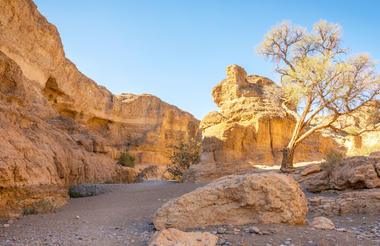
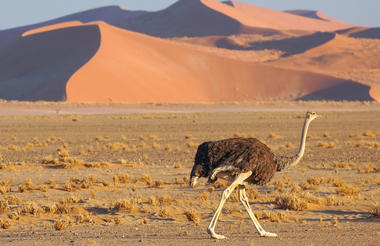

Founded in 1892 as the main harbour for German South West Africa, Swakopmund is often described as being more German than Germany. Now a seaside resort, Swakopmund is the capital of the Skeleton Coast tourism area and has plenty to keep visitors happy. The quirky mix of German and Namibian influences, colonial-era buildings and the cool sea breeze make it very popular.
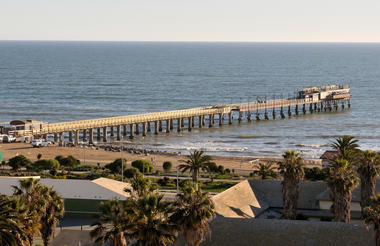
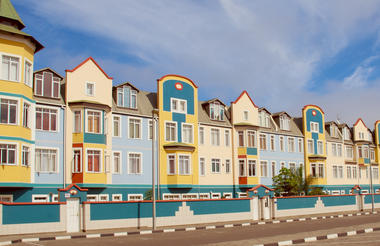
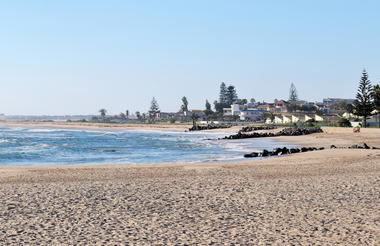
Palmwag is beautifully located along a palm-lined tributary of the Uniab River. Water is scarce in this area, so the river’s presence often lures elephants closer to the camps. Palmwag is situated halfway between Swakopmund and Etosha and is the ideal base from which to see the sights of the Kunene region or embark on one of the many local hiking trails.
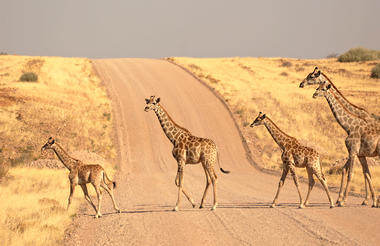
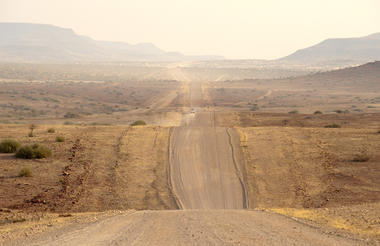
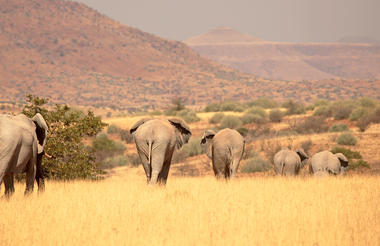
Located just south of the boundary of Etosha National Park in northwestern Namibia, Etosha South makes up the southern region of this wild paradise. Ogava Private Game Reserve shares the southern boundary with Etosha National Park and offers an array of luxury lodges overlooking picturesque landscapes dotted with abundant wildlife. The national park can be accessed via the southern entrance at Andersson’s Gate. Visitors can catch a glimpse of a variety of wildlife including: lion, giraffe, elephant, white and black rhino, and a multitude of plains game. Popular activities include: game drives, tracking rhinos on foot, guided nature walks, or watch the sunset over this magnificent landscape.
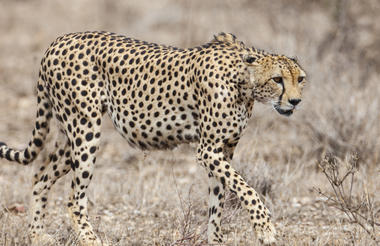
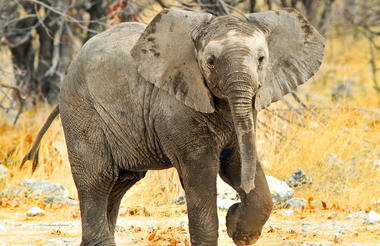
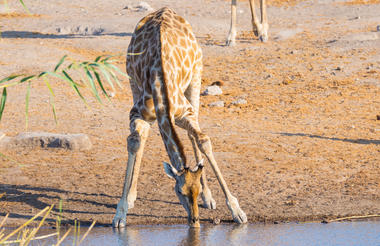
In the vast arid space of Northern Namibia lies one of Southern Africa’s best loved wildlife sanctuaries. The Etosha National Park offers excellent game viewing in one of Africa’s most accessible venues. Zebra and springbok are scattered across the endless horizon, while the many waterholes attract endangered black rhinoceros, lion, elephant and large numbers of antelope. Etosha, meaning ‘place of dry water’, is encloses a huge, flat calcrete depression (or pan) of about 5 000km². The ‘Pan’ provides a great, parched, silver-white backdrop of shimmering mirages to an area of semi-arid savannah grassland and thorn scrub. The pan itself contains water only after very good rains and sometimes for only a few days each year, but is enough to stimulate the growth of a blue-green algae which lures thousands of flamingos.
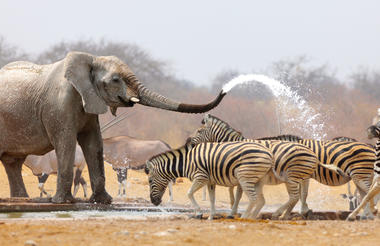
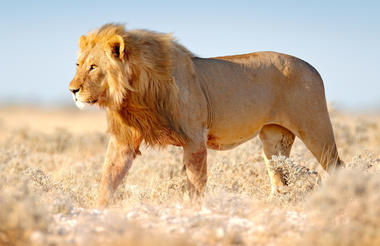
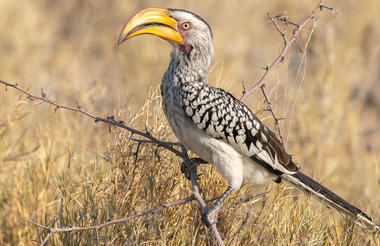
Bordering Angola, on the banks of the Okavango River in northern Namibia, the town of Rundu serves as the capital of the eastern Kavango region. Rundu is renowned for its local woodcarvers market as well as the numerous woodcarvers' huts dotting the side of the road. The town provides a great stopover to refuel for visitors heading to Katima Mulilo as well as an excellent base from which to explore the magnificent surrounding areas. Visitors to Rundu can enjoy the beautiful surrounds including the magnificent Popa Falls and Mahangu Game Reserve. Other popular activities include: great game viewing, excellent bird watching as well as kayaking on the spectacular Kavango river.
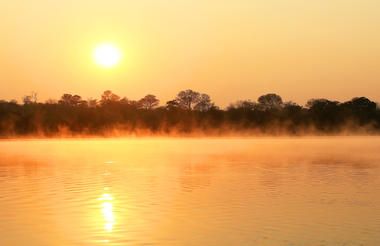
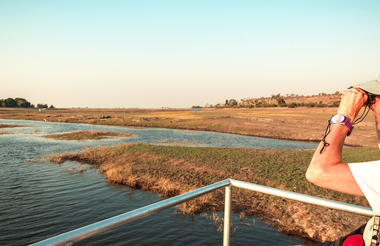
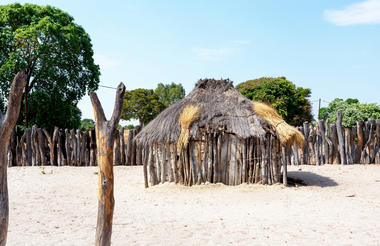
Meandering through the spectacular Caprivi Strip in northwest Namibia, the Kwando River rises from the central Angolan highlands forming the boundary between Namibia, Zambia and Angola. The area surrounding the Kwando River is known for its protected game reserves, national parks and wildlife sanctuaries. It offers excellent game viewing with the perennial waters of the river attracting plentiful wildlife including large herds of elephant, hippos, crocodiles, red lechwe, turtles, zebra, impala, spotted-necked otters and over 400 species of bird. Visitors can enjoy a relaxing stay at one of the many lodges set on the banks of the river and soak up the spectacular views of wild Africa. Popular activities include: game viewing, bird watching, fishing, and camping.
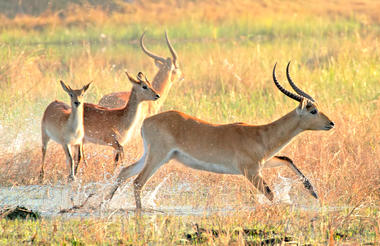
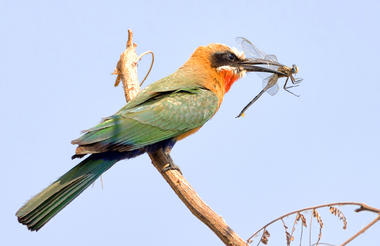
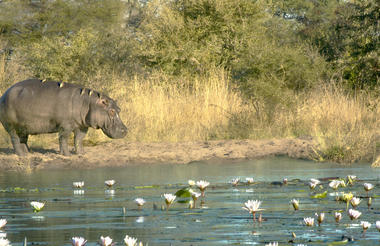
Despite recent and surprisingly rapid modernization, Botswana’s cities provide little in the way of tourist attractions. However, what the cities lack in excitement, the surrounding wilderness areas more than make up for in outstanding natural beauty. The country’s primary tourist draw card is undoubtedly the vast red expanse of the Kalahari desert and its remarkably beautiful Okavango Delta - the largest inland delta in the world provide a haven for an abundance of African wildlife. Other highlights include the impressive Makgadikgadi salt pans where visitors are privy to massive zebra migrations during the flood season; the Savuti plains which host large prides of lions; and the Tsodilo Hills where 4500 rock paintings form a unique record of human settlement over many millennia.
Fringing the world-renowned Chobe National Park, the Kasane Forest Reserve is located in the Lesoma Valley of the Central district in Botswana, approximately 800 kilometres north from Gaborone. A large portion of the terrain around the reserve is flat with plenty of wildlife, such as elephants, giraffes and even warthogs, roaming around undisturbed. Visitors can look forward to scenic boat cruises along the beautiful Chobe River, spot nocturnal animals in the forest on a thrilling night safari and enjoy bush camping under the African night sky.



This unique, peanut-shaped country, once known as Northern Rhodesia, offers visitors an authentic African experience complete with adrenalin pumping adventure sports, a variety of fascinating cultural activities, and an abundance of indigenous wildlife which finds refuge in Zambia’s vast national parks. Spend your evenings enjoying the spectacular site of the world’s largest waterfall, the Victoria Falls, while sipping on sundowners after an exhilarating day of whitewater rafting down the rapids of the mighty Zambezi River. If that sounds a little too adventurous for your taste, take a houseboat cruise along the exquisite Lake Kariba while watching wild elephants drink at the riverbank as you try your hand at catching the elusive tiger fish. However you choose to spend your time in this unique country, you are bound to leave with a heavy heart and a desire to return again soon to this exceptionally beautiful Southern African country.
Zambia’s flourishing border town, Livingstone, or Maramba, is situated in the South Province of the country. The British colonial city is a tourism centre for the nearby Victoria Falls, Mosi-oa-Tunya National Park, and the Zambezi River. Continuously growing, this romantic destination is rich in culture and history, with a host of adrenaline-infused experiences to choose from including bungee jumping, abseiling, gorge swinging, white water rafting, kayaking, canoeing, and jet boating. For visitors seeking a more relaxed experience, there are countless other activities on offer too. Visit the fascinating Livingstone Museum, take a helicopter flight over the roaring fall, or experience a superb game drive in the UNESCO-listed Mosi-oa-Tunya National Park, home to African elephants, hippopotamus, and an impressive variety of bird species.
